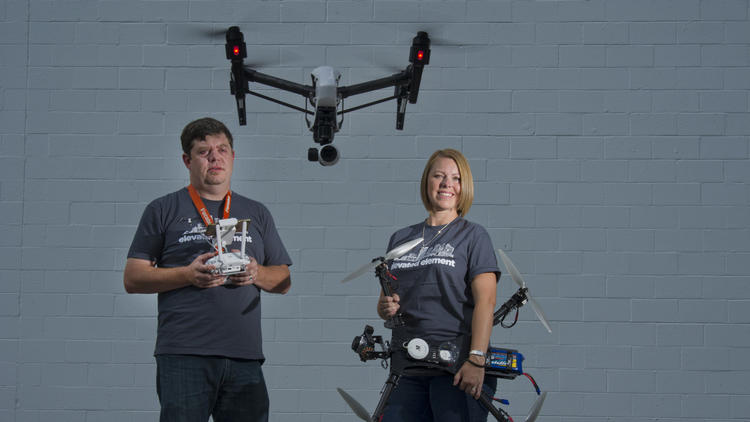
By Ian Duncan The Baltimore Sun
Federal aviation officials are looking to police in Maryland to help deal with a new kind of lawbreaker: drone pilots.
Following complaints from pilots about unmanned aircraft, the Federal Aviation Administration has referred more than a half-dozen cases to law enforcement agencies in the state over the past 18 months, federal records show. That pace is likely to pick up, as pilots are reporting more sightings and near-misses with aircraft.
“Safety’s our first priority,” said Carmine Gallo, the director of the FAA region that stretches from New York to Virginia. “Our responsibility is outreach, education and — if necessary — education again and enforcement.”
In recent weeks, drones have grabbed headlines for near-misses with aircraft — and other potentially unlawful activity.
Last week, for example, Western Maryland authorities arrested two men who were suspected of planning to use a drone to smuggle contraband into a state prison. Attempted drone deliveries of contraband have also been reported in Ohio and South Carolina.
There have been a number of cases of small four-rotor helicopters known as quadcopters having close encounters with other aircraft. In early August, a jet crew reported a small drone within 20 feet of their aircraft as they flew over New York; two days later a helicopter pilot filed a similar report.
But even people who might think they’re using a drone innocently can be breaking the law.
The commercial use of drones must be approved on a case-by-case basis, and just 1,000 companies nationwide have received the go ahead from the FAA. Hobbyists with a $1,000 craft ready to go out of the box can fly it — as long as they follow some basic rules.
The problem, aviation officials and researchers say, is they often don’t know what those rules are.
“I don’t think there are people that are out there saying, ‘I’m trying to cause a major aviation disaster,’” said Jon Greene, a retired Navy officer who works on drone research at Virginia Tech. “I think there are people who just don’t understand what the risk is. Those things flying in the wrong place at the wrong time can take down a general aviation aircraft and can be ingested into an engine of a commercial airline, and that can be really, really bad.”
The FAA says pilots have seen a surge in the number of drones in the skies, filing more than 650 reports of sightings this year by early August. They reported only 238 sightings in all of 2014.
Agency records show a number of incidents in Maryland, including one last year in which a pilot reported a quadcopter approaching his plane soon after he took off near Annapolis. “Pilot stated that was a very unsafe situation,” the report reads, though there is no indication an investigation was launched.
Government officials are trying to warn would-be drone users about the risks and the rules. Earlier this year, the U.S. Department of Agriculture issued an image in the style of a World War II propaganda poster warning drone pilots that if their devices are in the air, emergency crews battling wildfires will be grounded.
On Friday, the FAA released a test version of a iPhone app called B4UFLY to 1,000 drone users. The tool indicates whether it’s legal to fly in a particular location, cutting through the layers of rules that govern American airspace.
Although the FAA is trying to work with local police, two departments in Maryland that FAA records indicate got a complaint about drones said they had no record of any investigation. The FAA can carry out civil investigations and levy fines on its own, and it has filed about 20 cases, spokesman Les Dorr said. It has reached settlements in five cases and has proposed penalties in another five, he said.
While pilots continue to get spooked by errant drones, entrepreneurs and researchers complain that they face overly restrictive limits on their aircraft, even though they have more incentive to fly safely.
Terry Kilby has been developing drones for a few years, ever since he bought a device that let him print out parts to make his own unmanned aircraft. As he progressed, he started ripping apart Nintendo Wii remotes and pressing the sophisticated technology into service. He also tested his skills on flight simulators to avoid costly crashes.
“When we were first starting, it took a lot of practice,” Kilby said.
Now he’s trying to develop a successful aerial photography and digital mapping business. He quit a lucrative engineering job this year to work full time in building and using drones.
More http://www.baltimoresun.com/news/maryland/bs-md-drone-safety-20150829-story.html